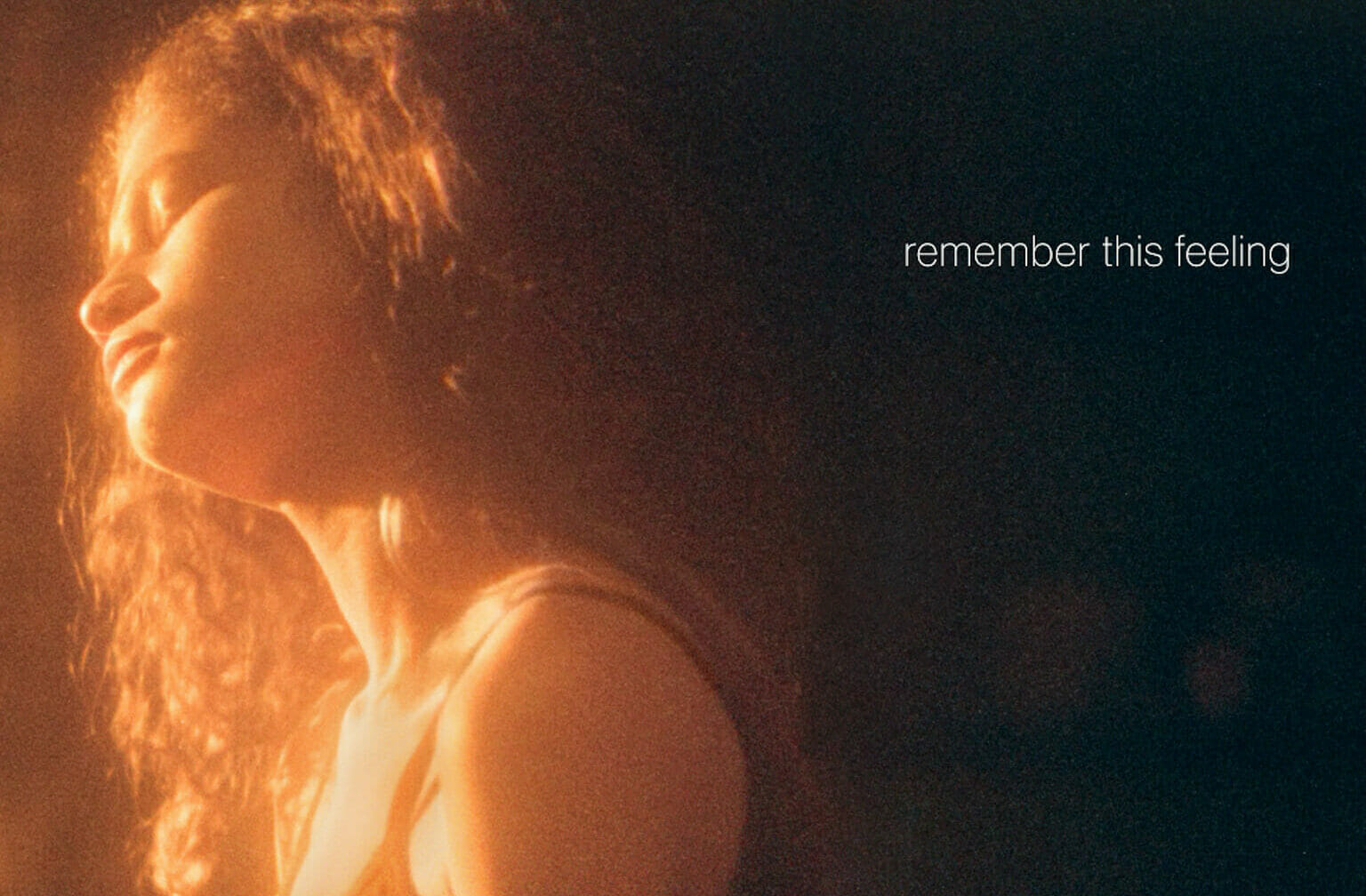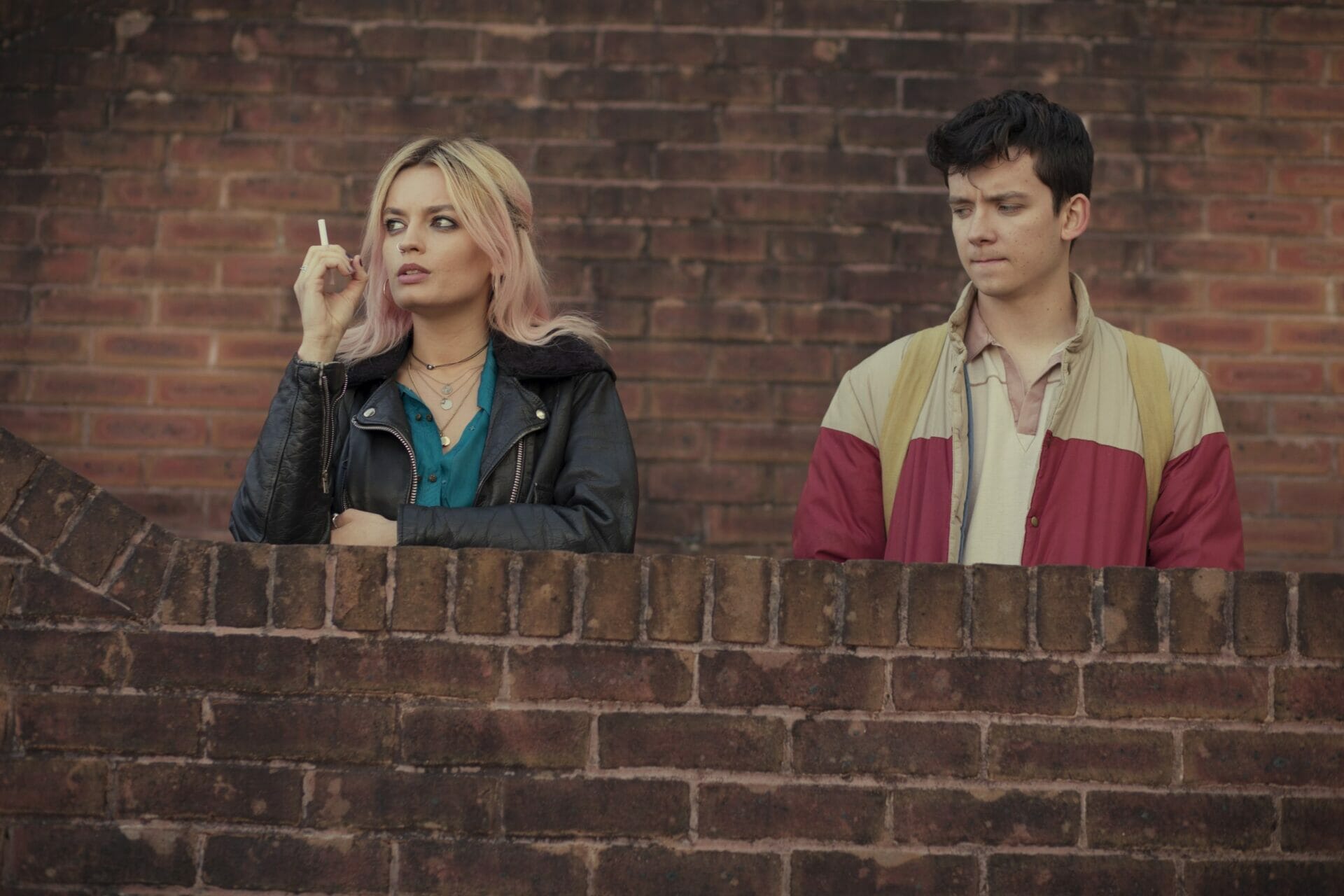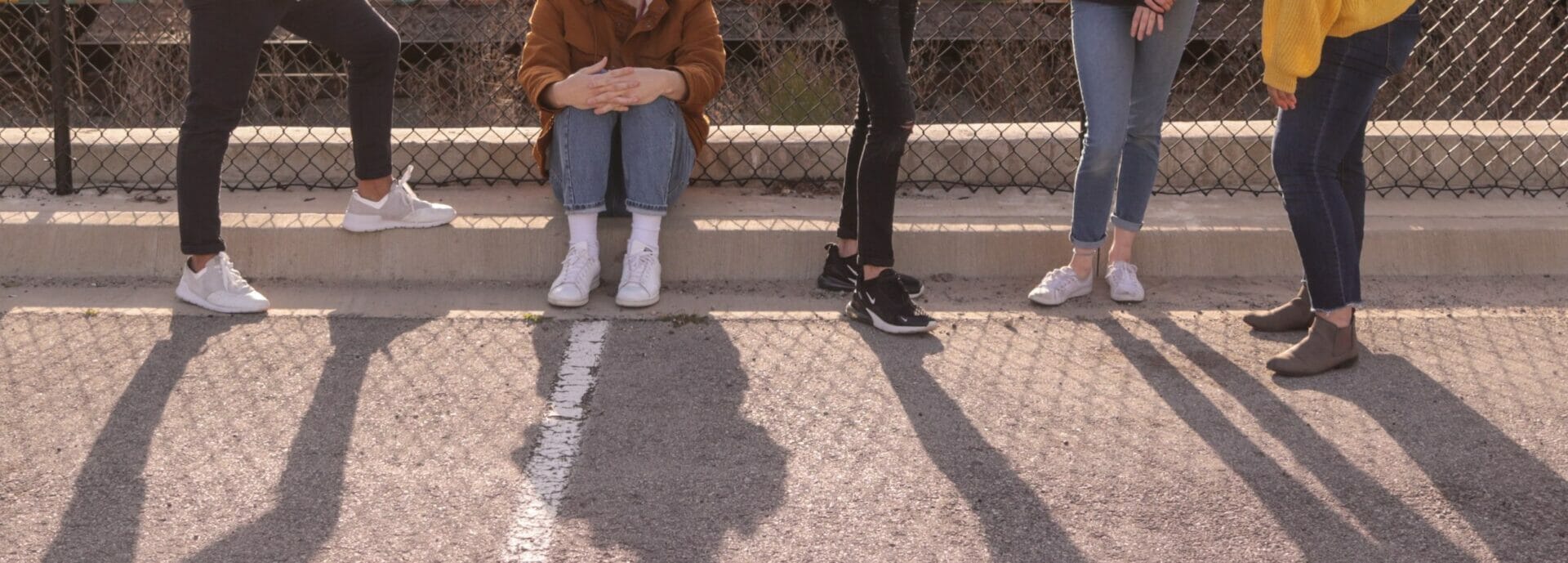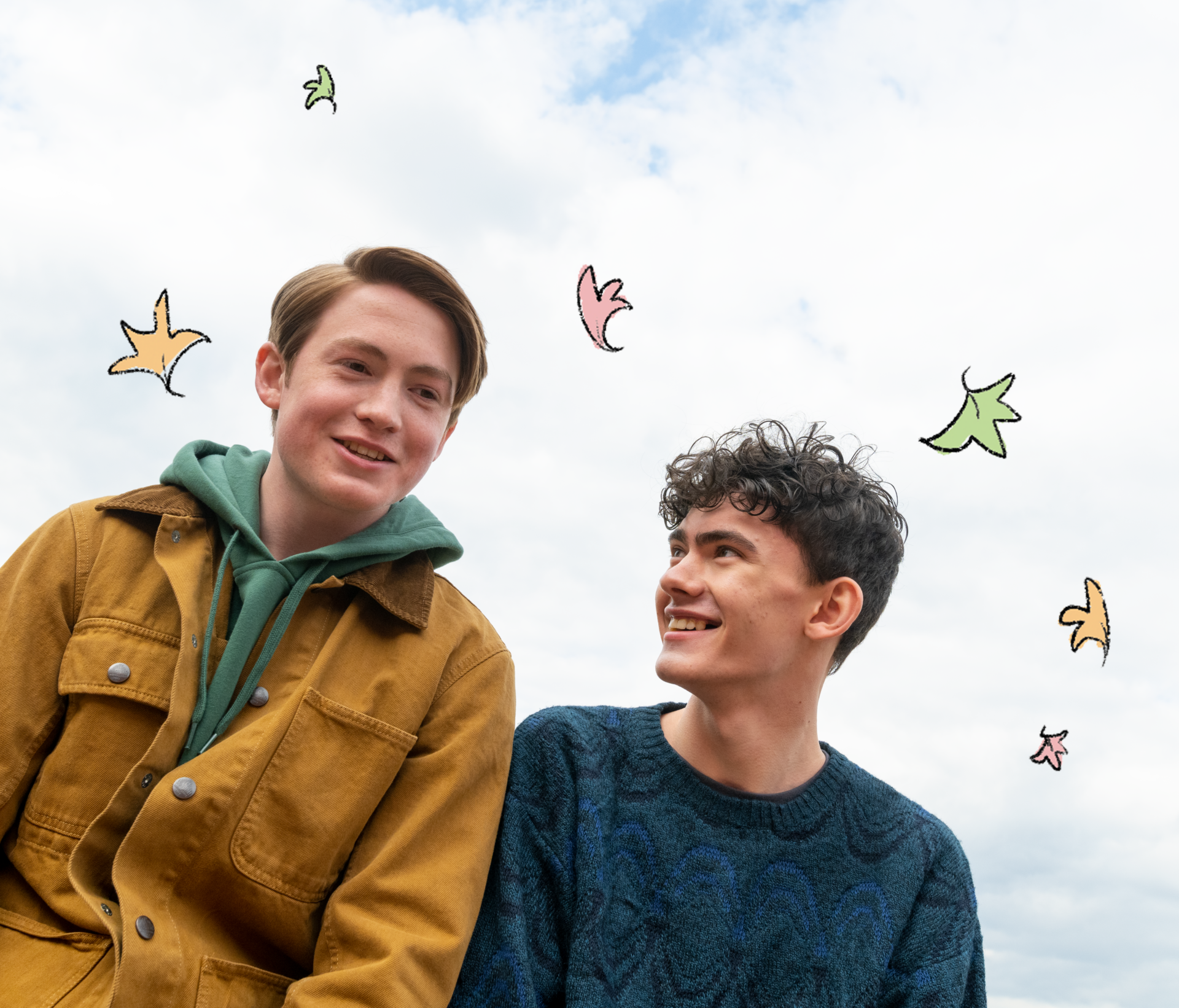
Heartstopper | A Queer Love Warming Everyone’s Heart
Creator
Showrunner
Director
Year
Country
Seasons
Runtime
Genre
Music by
Since time immemorial there has been an ancient proverb of unknown origin, passed down by the wisdom of folk tradition: “Your first love never dies.”
And there is a reason why these ancient proverbs continue to be passed down through generations. They persist in making their way through the earth’s changes and man’s wars. The reason is quickly stated: because they conceal a kernel of truth.
Be honest. Who does not remember the overwhelming thrills of the first crush? The shiver down your spine when your eyes meet? That electric tingle when your hands almost touched? Or the unspeakable sensations of the first kiss?

This perhaps explains why Heartstopper – the Netflix teen drama adapted from the LGBTQ+ young adult romance webcomic and graphic novel series of the same name created, written, and illustrated by young bestselling British author Alice Oseman – has met with huge critical acclaim and instant popularity among viewers. Suffice it to say that the TV show has a “Certified Fresh” 100% approval rating on Rotten Tomatoes.
So it definitely seems to be true: you never forget your first love. And the magic of Alice Oseman’s teen romance has won everyone over. Because Heartstopper is an inclusive feel-good story rich in educational value starring high school students as they grapple with first loves, the challenges, and the angst of their youth. What’s more, the show features a cast of queer youths (as well as a surprise appearance by Academy Award-winning actress Olivia Colman) who are about the same age as the characters they are playing and, therefore, better than anyone else can empathize with the events and convey their backgrounds to the viewer.
Ultimately, this queer coming-of-age romance, embellished with magical 2D animations, stands out in the current TV scenario for its heartwarming sweetness, simplicity, and tenderness and for its focus on positive outlooks and aspects.
- Charlie Meets Nick and They Fall in Love
- An Optimistic Approach
- Beyond the Narrative of Pain
- 2D Doodles and Animations
- Bisexual Lighting and Rainbow Shades
- Subverting Tropes
- A Bright Future
Charlie Meets Nick and They Fall in Love
Charlie (Joe Locke) is an introverted gay student at Truham Grammar School for Boys. After being outed and bullied a year earlier, he is now more determined than ever not to hide anymore. Back from winter break, he just wants things to go right and put the past behind him, focusing on playing drums and hanging out with his best friends. They are movie lover Tao (William Gao), devourer of books Isaac (Tobie Donovan), and stylish Elle (Yasmin Finney), who recently transferred to Harvey Greene Grammar School for Girls after coming out as transgender. But an unexpected twist is just around the corner. Indeed, Charlie meets his new seatmate Nick (Kit Connor), a popular rugby-playing boy. Eventually, they strike up a deep friendship that soon turns into something more. Charlie and Nick will embark on a roller-coaster journey of self-discovery and acceptance that will lead them to fall in love.

An Optimistic Approach
What emerges most while watching Heartstopper is the tone of the narrative. Indeed, the series moves away from the queer content the public has become accustomed to watching in current teen dramas. And it does so by embracing a positive, romantic, joy-filled, and hopeful slant distancing itself from trauma and darkness. However, this does not imply that Heartstopper does not include adult themes, as it were. Rather, the story opts for a brighter approach to investigate its characters and their storylines.
The show proves successful in offering the viewer – especially queer viewers who are too often used to witnessing marginalized queer characters usually sinking into a dark spiral of toxicity, ostracization, and drugs – a more optimistic representation of major themes such as coming out, identity, mental illness, bullying, homophobia, and, more broadly, being a queer youth in this day and age.
For me, it’s just about celebrating queer joy. Above all, I hope that it just makes people smile and brightens their day – but I also hope that it inspires, particularly, young queer people to believe that they can find happiness and find romance and find friendship.
Alice Oseman in an interview with Netflix Tudum
Beyond the Narrative of Pain
In this same vein, in particular, Heartstopper stands in antithesis to other recent teen dramas such as Elite, Sex Education, and Euphoria. So much so that it has even been referred to as the “anti-Euphoria“. Although both pieces by Alice Oseman and Sam Levinson have at their heart the narrative of Generation Z as well as LGBTQ+ characters, their slant is, in a sense, sharply opposite. If Euphoria shows a glimpse of teen frailty through the so-called narrative of pain, Heartstopper brings to light an equally vibrant, realistic glimpse and seems to suggest to the viewer: “Be aware that there is also this other side of the coin.”
Therefore, Oseman chooses to reassure the viewer, to explore serious issues while always seeing them as a glass half full. Because while it is true that, especially regarding queer issues, the drama-centered narrative arc often reflects the need for political-social awareness and denunciation, it is also true that the traditionally underrepresented LGBTQ+ viewership needs a comforting, light-hearted narrative. A narrative that a straight viewership has been accustomed to watching (and selecting) all along.
I think a lot of queer people growing up feel like they don’t deserve love, because they don’t have access to the same dating pool or support as straight people do. And so Heartstopper is so lovely in that it gives that to queer characters.
Joe Locke in an interview with The Independent
Overall, Heartstopper, imposing itself as a happy narrative that shifts the focus from pain to surprise in self-discovery and love, “lays the strong foundations of what you can only hope will be the uplifting and inclusive depictions of queer characters for the next generation of viewers.”
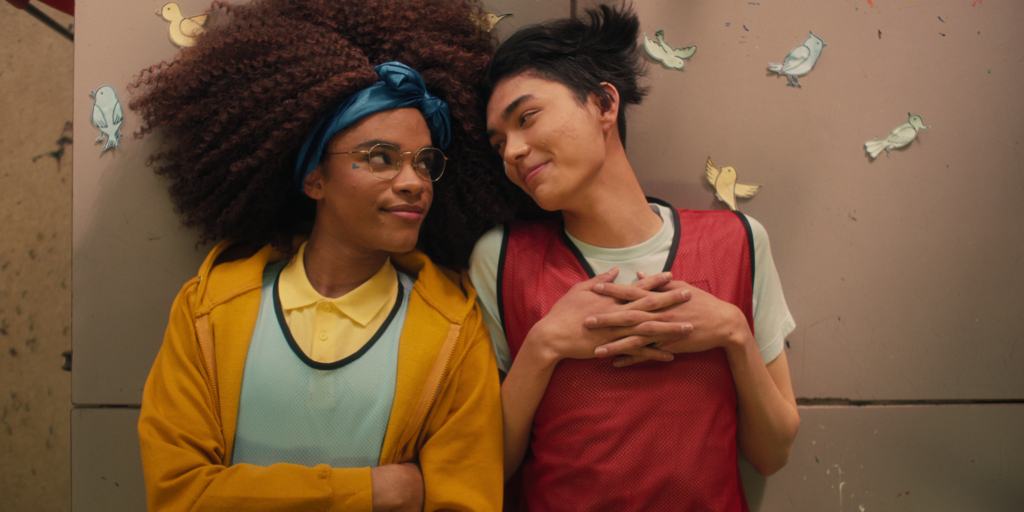
2D Doodles and Animations
When working on an adaptation, one of the most challenging tasks is precisely to respect the origin of the piece. Honoring its soul and preserving it while it has to adapt to the new medium it is in. This seems like a tough responsibility when it comes to a graphic novel. But Alice Oseman rose to the occasion and managed to bring some of the magic of her illustrations to the screen as well. Indeed, what immediately strikes the viewer – especially the most loyal fans who have read the graphic novel – is the way the show celebrates and echoes its source material. And it does so by incorporating 2D animation elements into the live action.
Italian 2D animator and storyboard artist Anna Peronetto created all the animations using some storyboards drawn by Oseman. As a result, brightly colored doodles appear throughout the series, punctuating the so-called “Heartstopper moments”, that is, moments charged with lighthearted romanticism. To mention just a few: the sparks of electricity when Nick’s hand touches Charlie’s; the snowflakes gently falling on them; the lovebirds; or the leaves floating on the screen reminiscent of cherry blossoms typical of Japanese animation. In the end, these animations prove how true the series is to the graphic novel. They also succeed in enhancing the tenderness of the most romantic scenes. And they also visually convey what is inside the characters’ minds and hearts.
A choice that proved successful. A hint? Try googling “Heartstopper“. The traditionally animated leaves – now the visual motif of both the graphic novel and the TV show – will float across your screen.
Mixing live action and animations is a recurring trend in movies. Especially in Disney movies. Just think of the famous Mary Poppins (1964); Bedknobs and Broomsticks (1971); Who Framed Roger Rabbit (1988); and Enchanted (2007). But also in other movies such as Space Jam (1996), or Looney Tunes: Back in Action (2003).

Bisexual Lighting and Rainbow Shades
As the graphic novels are black and white, apart from the pastel-colored covers, the creative team also faced the additional challenge of bringing light and color to the story. Cinematographer Diana Olifirova worked to develop a color palette that could visually capture the atmosphere of romance and tenderness that pervades the entire story. Above all, an interplay of lights and colors that could highlight and honor the queer soul of Heartstopper. The result is a vibrant and colorful palette ranging from blu, turquoise, pink, orange, and yellow.
A detail that jumped out at many viewers is the use of what is known as “bisexual lighting“. This is a type of cinematic and television lighting that bathes on-screen characters in pink, blue, and purple lights. Its name originates from the fact that these are the same colors as the bisexual pride flag. Heartstopper features several scenes with this aesthetic. Executive producer Patrick Walters explained that the bisexual lighting in the series is intentional and first appears in the very scene where Nick finally seems to come to terms with his feelings for Charlie.
In recent years, bisexual lighting has been increasingly discussed on social media, gaining notoriety. Indeed, many fans have enjoyed sharing examples of movies, TV shows, or music videos that use this specific aesthetic. Some of the most cited are the music video for Janelle Monáe‘s single Make Me Feel (2018); the movies Moonlight (2016) and Blade Runner 2049 (2017); as well as the episode “San Junipero” from the series Black Mirror.
Eventually, whether intentional – as in the case of Heartstopper – or not, bisexual lighting became a phenomenon. More notably, however, it has proven to be a true storytelling device for portraying sexuality in visual narratives.
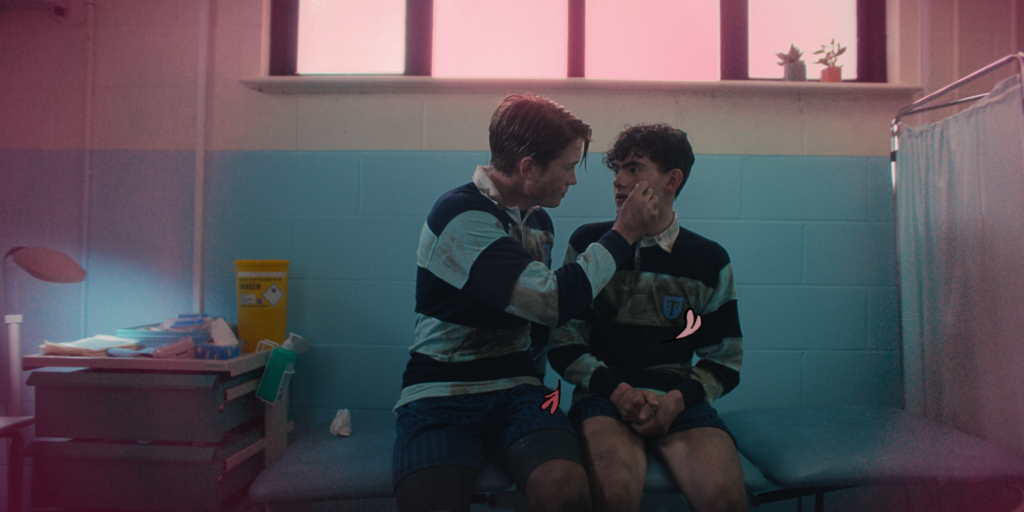
Subverting Tropes
Like proverbs, narrative tropes have always been present and have persisted in various forms throughout the evolution of storytelling. And if the screenwriter is the hero embarking on his journey – the writing of the story – then tropes can be considered as some of the weapons at his disposal in his arsenal. And just as proverbs have come down to our time because they conceal a kernel of truth; then the storyteller uses tropes because they often actually work. They are both reassuring and frequently respond to the viewer’s expectations. Concerning the use of tropes, Heartstopper is no exception. But what it succeeds in doing is subverting them all.
I always think a trope is a trope for a reason. Tropes can feel overused. But when it’s featuring marginalized characters, you probably haven’t seen that as much as you think you have.
Alice Oseman in an interview with Netflix Tudum
Oseman, at last, manages to use most tropes of the genre to turn them queer. Starting with a romantic kiss in the rain, as in any self-respecting rom-com. But there is more. Indeed, Heartstopper‘s insightful and original writing style acts to offer the viewer an authentic portrayal of queer teenage youth that also shatters many gender-related stereotypes.
One only has to think of the two protagonists. Charlie is a gay boy who plays drums and also turns out to be good at rugby. On the other hand, Nick is considered straight by everyone just because he is the captain of the rugby team. In a culture where most narratives associate drumming and rugby with heterosexual males, Heartstopper breaks this stereotype and shows a new point of view. In the same way, the character of Tao is also a kind of “black sheep” because he shows another way of being a straight man.
Also noteworthy are the ways in which the show chooses to portray teens’ relationship with technology. That is, in real ways and with a positive slant. We see the characters typing messages, changing their minds and deleting them, then typing new ones. We see them online and anxiously wait with them for the words “is typing…” to appear on the screen. Especially, as pointed out by Rachel Aroesti for The Guardian: “In Heartstopper, technology is also the primary medium for self-discovery.”
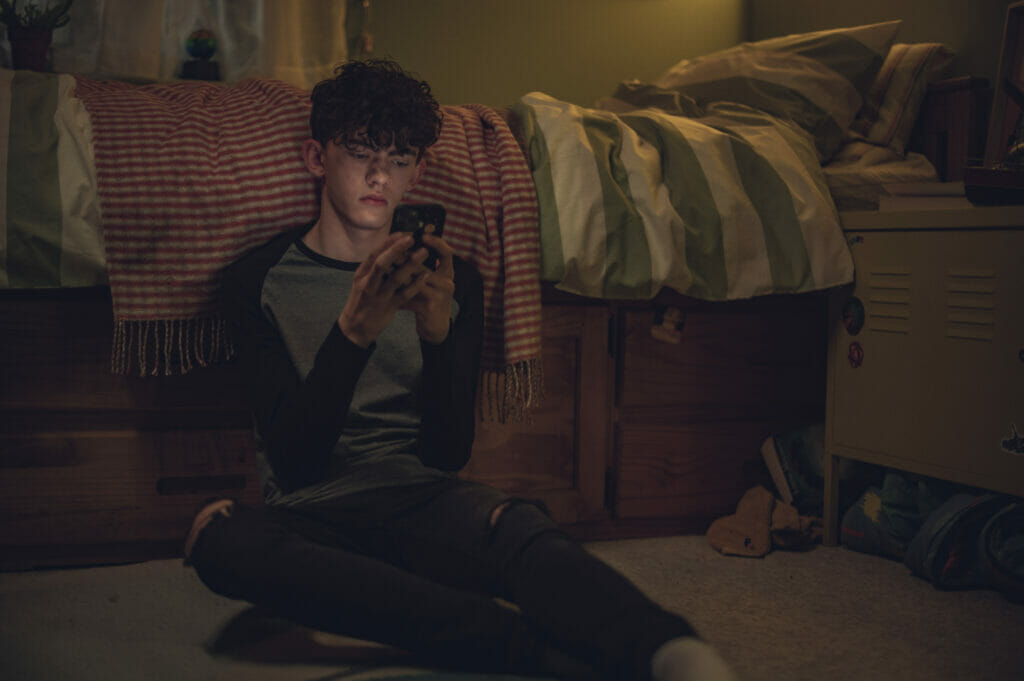
A Bright Future
In conclusion, thanks to all the above, Hearstopper proved to be a series that pays meticulous attention to every smallest detail. The result is a light-hearted but by no means superficial narrative that has shone a bright new spotlight on the way queer teenagers are told and that has also been able to stand on an educational level without being pretentious. Through its hopeful tone, it reminded the viewers that the teen drama genre is not merely drama but, indeed, much more. Complex and multifaceted. As people are.
More details about the production of this successful adaptation are all over the place. Viewers and readers can even learn how to draw in Oseman’s style, watching the art lesson the author gave to the main cast.
Tag
Buy a ☕ for Hypercritic







